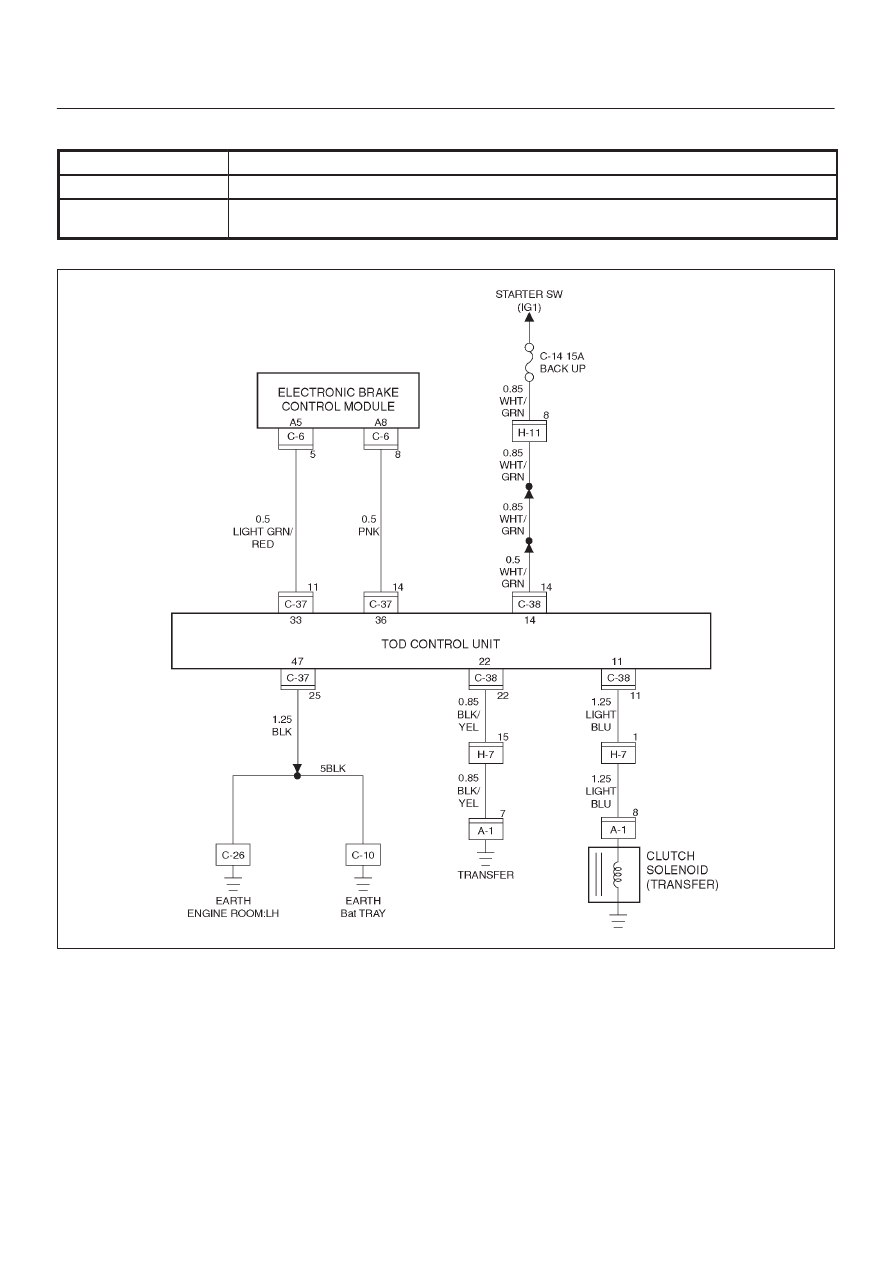Isuzu Amigo / Axiom / Trooper / Rodeo / VehiCross. Manual - part 123

DRIVE LINE CONTROL SYSTEM (TOD)
4B2–110
Chart 4
The braking distance gets long even when the ABS is active.
Function of circuit
—
Fail condition
Enough deceleration is not obtained and the braking distance gets long even when the
ABS is active in the 2H mode.
D04R200021